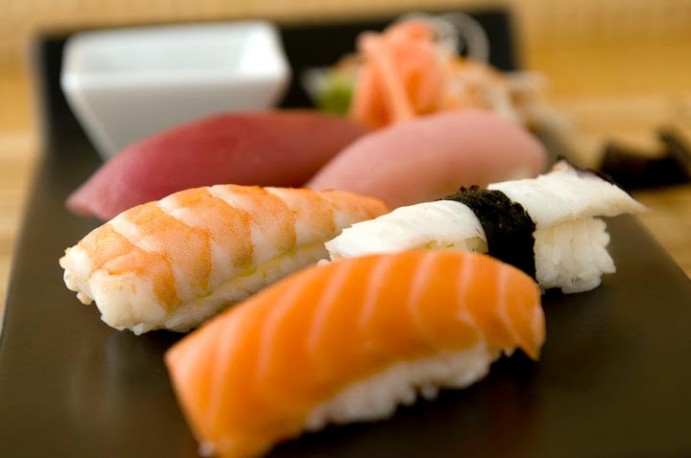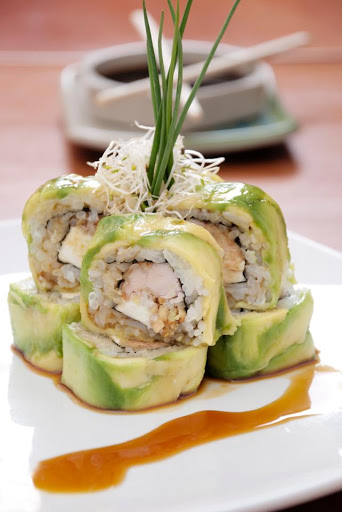Sushi is a popular treat the world over, including in Santiago. The city is not lacking in sushi restaurants- almost every shopping district and major street is bound to have one, or even a few. However, there are some marked differences between the sushi typically eaten in Chile when compared with that of the United States (which, of course, is itself a variant on what is considered “sushi” in Japan).
Although there are always exceptions, these are some general differences to bear in mind. Wasabi is often considerably less spicy than what is used in the United States. Cream cheese is a far more common ingredient in sushi rolls, as is chicken. In Chile, the use of Japanese words for dishes and ingredients is more common, and “California Roll” does not mean that crab is prominent, it means that the roll has an outer layer besides rice or seaweed (nori), such as smelt roe (masago) or avocado (palta). Most restaurants tend to have fewer ingredients than foreign guests may be accustomed to, although more vegetables and incidentally vegetarian options are easy to find. Many guests are happy to use silverware instead of chopsticks. Dessert is simple, typically fruit or ice cream without mochi, the popular Japanese rice-based sweet.
Sushi is relatively cheaper in Chile, at about $1.000 pesos for a roll at an average restaurant or chain establishment. Some have overall lunch discounts, but the most common type of offer involves various combinations of rolls listed by the total number of pieces included. Bento box offers and other plates heavy on side dishes are not common.

Sides include gyozas and various noodles, and occasionally tofu appetizers and salads, although empanadas and ceviche are not uncommon either. In fact, many Chilean sushi restaurants are Peruvian-owned, due to the Japanese influence on Peruvian culture. For this reason, “fusion” sushi restaurants are normally combined with typical Peruvian or Chilean food rather than other Asian cuisines.
There are several more upscale Japanese restaurants in Santiago, such as Ichiban in Vitacura or Japon at Hotel Nippon, the latter of which is often called the most authentic Japanese food in Santiago. These are more expensive but have a wider variety of fish and sashimi, and simple fish-on-rice sushi, which is not a staple at most sushi restaurants. Sake is almost always available at such locations, as opposed to their more economical counterparts.
Sushi is commonly made at home in Chile as well, due to the relatively easy access to seafood and cost savings. Bamboo mats and ingredients can be found in most major supermarkets. It is also a street food that is sold alongside empanadas and sandwiches outside of metros and the like, and this sushi is frequently vegetarian, but lacking in condiments. Sushi is a fun experience to try while in Santiago, and even big fans can easily fulfill their cravings while on vacation.
